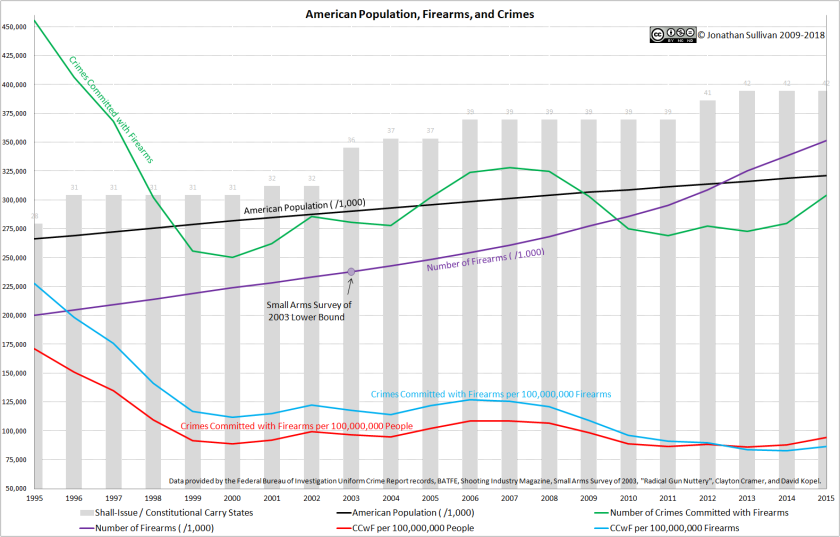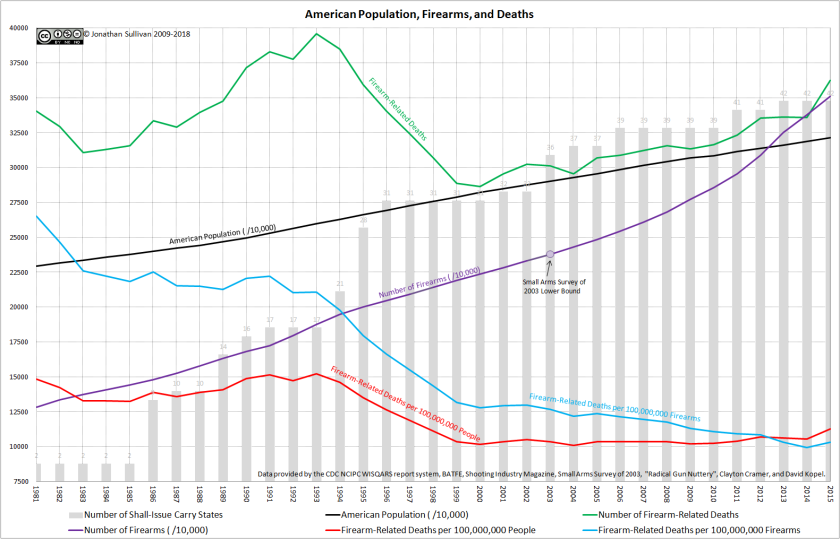One would think, given their endless clamoring for more laws, regulations, and restrictions, “enforce the laws on the books” would be a notion that “gun control” extremists would agree with.
Sadly, one would be wrong.
Consider, for example, the peculiar case of Scott Pappalardo.
On 17FEB18, in response to the Marjory Stoneman Douglas High School shooting three days prior, Scott filmed himself cutting up his 30-year-old AR-15 in an attempt to virtue-signal his support for “gun control”.
In the process, he also committed a federal felony.
Specifically, Scott Pappalardo illegally made a short-barreled rifle (SBR) without paying the appropriate tax stamp, and in so doing, he violated at least sections (c), (d), and (f) of the 26 United States Code § 5861. Per the Bureau of Alcohol, Tobacco, Firearms, and Explosives National Firearms Act Handbook, this offense can carry up to a 10 year prison sentence and up to a $250,000 fine.
Bear in mind this is a strict liability offense – neither mens rea nor intent factors into the specific law. Intent only applies to the creation of the rifle itself; once the rifle already exists, taking a hacksaw to the barrel, regardless of whether you intend to make an SBR or knew that doing so would create an SBR, is a crime, all by itself.
It is worth noting that Scott did, eventually, also cut up the receiver; however, he only cut it once, and with the same saw. There seems to be some disagreement over the legal requirements to destroy a firearm, but, regardless, he cut the barrel first, thereby making the SBR, before he arguably destroyed the evidence of the crime.
To my knowledge, as of this post’s date, Mr. Pappalardo has not been arrested or charged with the appropriate crime(s). That is, unfortunately, to be expected; prosecutorial discretion – i.e. selective enforcement of the law – is a time-honored loophole for useful idiots that the government wants to protect, or at least does not want to pursue. But what is really interesting is how the “gun control” community has reacted to this law-breaker.
 They are holding him up as a hero.
They are holding him up as a hero.
Around the country, “gun control” extremists are referring to Scott as “level-headed, conscientious”, “a man with a conscience and a soul”, a “good man”, and so forth. Others hoped other firearm owners would replicate his “powerful statement”. Even the local chapter of a “gun control” astroturf farm stuck their hand in the blender, describing Scott’s actions as “commendable”. They later deleted that tweet – I wonder why?
And much like school shooters themselves, the popularity and media attention showered on Scott Pappalardo has prompted copycats, notably Karen Mallard, who happens to be running for Congress out of district VA-02. She, at least, had the presence of mind to delete her video from Facebook and YouTube after scores of people pointed out that she was violating federal laws, but, as they say, the internet is forever [Update: it appears I spoke too soon about Karen’s wisdom – she reposted the video on her Facebook page]:
Once again, she cut the barrel first. In Karen’s case, I have no idea if she ever got around to cutting up the receiver – the part of the firearm that is legally considered The Firearm – so she may still have an illegal, and illegally-made SBR on her hands. So far as I know, there is no clause in the Constitution preventing felons from serving in Congress, but I imagine the 10-year sentence might get in the way of her aspirations. Assuming she is prosecuted, of course… which she will not be, of course.
In both cases, if Scott or Karen had simply adequately destroyed the receiver first, we would all be shaking our heads at the senseless destruction of perfectly functional firearms, but no crime would have been committed. Hell, if they had simply removed the uppers from the lowers first, they still would not have committed a crime (though we are entering into an uncomfortable grey area there). However, cutting the barrel of a rifle to less than 16 inches, while it is still attached to the rifle, is very much a crime, with some very stiff penalties.
Lest anyone think I am joking about the severity of this felony, allow me to remind you that a man’s dog, son, and wife were all murdered by government agents – the last while unarmed and literally holding their 10-month-old child in her arms – all because he cut the barrel of a few firearms about 3/8″ too short. Karen Mallard and Scott Pappalardo cut their barrels about a foot too short, and thanks to them “trying to do the right thing”, they will escape prosecution.
And, you know what? I am sanguine with that. You see, this situation is a win-win for the pro-rights community.
One of two things will happen:
- The Federal Government will prosecute these numerous “unconvicted felons”. In that case, yes, the laws on the books will be enforced, which will be a perfect opportunity to demonstrate just how ridiculous malum prohibitum laws are, and, let us be honest – 99% of firearm laws are malum prohibitum. Histrionics and hysterics aside, SBRs are no more dangerous than any other rifle or handgun, and the additional tax stamp and background check to make or purchase them is patently ridiculous.
- The Federal Government will decline to prosecute these virtue-signallers who helpfully recorded their felonies on tape. In that case, I guess we are not enforcing the laws on the books, which calls into question why we have the laws to begin with, if we are not going to bother prosecuting people who violate them.
And all the while, the “gun control” extremists and organizations are trapped in an absolutely delicious Morton’s Fork. Either they mount their white knight atop his valiant steed and come to the defense of these ignoramuses who committed rather serious federal felonies, or they throw these useful idiots under the bus and ignore the Holy and Glorious Deed they were attempting to accomplish. Because a felony committed for The Right Reason is acceptable, right?
Like I said, it is a win-win… for the folks on the right side of history.
So what is it going to be, “gun control” extremists? Shall we enforce the laws on the books, and throw these would-be do-gooders – in your universe, at least – in a federal penitentiary, as they deserve?
Or shall we ignore their offenses, because reasons?
And if we do ignore people breaking the law when it is convenient, remind me again why we should take your mewling for more laws seriously?

(NOTE: I am not a lawyer, I am not your lawyer, and I did not stay at a Holiday Inn last night. Nothing I say here should be construed as legal advice or guidance.)











